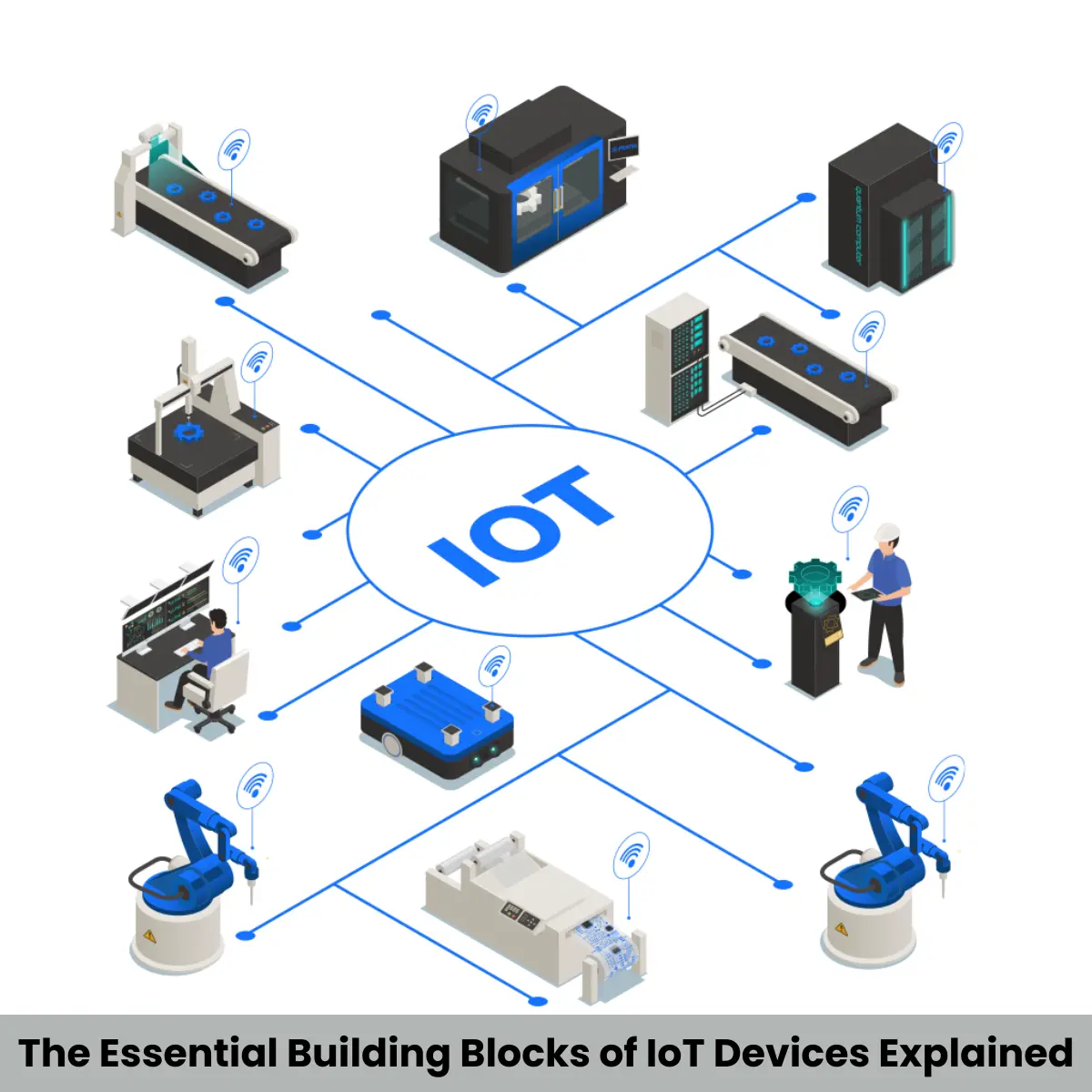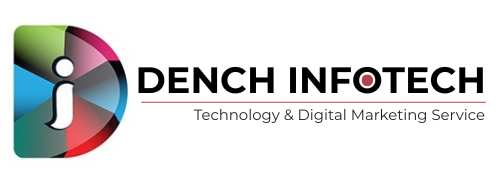
The Essential Building Blocks of IoT Devices Explained
- January 24, 2025
What Is an IoT Device?
Steam-powered objects like sensors and software help devices
access networks to send and receive data. These devices include smart light
bulbs along with advanced industrial equipment. Software development service plays a
critical role in enabling an IoT device to function by sensing information,
analyzing the result, and then sending it over networks or to other linked
components.
The technology allows systems to run themselves while also
helping users see what is happening and make choices based on data.
IoT Device Examples
To better understand IoT devices, let’s look at some
real-world examples:
1.
Smart Thermostats: Nest smart thermostats let users manipulate their home temperature from
anywhere plus determine effective heating plans for more energy savings.
2.
Wearable Health Trackers: Fitbit health trackers measure physical motion, heart
functions and sleep development to record medical information for users.
3.
Smart Security Cameras: The security system Ring lets customers watch their home's
footage live while sending immediate notification alerts.
4.
Connected Cars:
Today's cars use sensing technology that helps drivers reach their destinations
safely and gives them better entertainment features.
5.
Industrial IoT (IIoT): Factories track equipment performance and detect maintenance
requirements by using sensors in their machines.
These real-life examples show how Internet-connected devices
help make services run better across business fields.
What Makes Up Basic Internet of Things Technology A close
look at what makes an IoT device work.
1. Sensors and Actuators
The Eyes and Hands of IoT Both sensors and actuators create
the foundation of an Internet of Things device. Your device can connect with
physical things due to its core components.
·
Sensors: These
devices receive data from the world around us. They detect temperature changes
and humidity levels plus respond to movement while tracking light and pressure
readings. A smart thermostat can monitor room temperature thanks to its
built-in temperature sensors.
·
Actuators:
These devices receive information from data processing and then take action
accordingly. By using actuators you can activate electrical systems including
moving devices and turning on illumination as well as securing doors. The
actuator system in smart irrigation controls water flow based on how wet the
soil becomes.
Your selection of sensors and actuators depends on how you
plan to use them. When selecting these devices focus on their measurement
precision plus working distance and part compatibility.
2. Microcontrollers and Microprocessors
The Brain of IoT Every IoT device depends on a processing
unit to handle data and trigger commands to connect with other hardware. This
is where microcontrollers (MCUs) and microprocessors (MPUs) come in.
·
Microcontrollers: Built around a tiny and energy-efficient microchip design these devices
combine data storage with multiple ports and processor functions. You will find
these chips in Arduino boards and ESP32 modules. These systems perform basic
sensor reading tasks and activate machine functions effortlessly.
·
Microprocessors: These devices handle advanced operations because they need substantial
processing resources. The popular Raspberry Pi serves as a demonstration.
Choose between MCU and MPU based entirely on how powerful your IoT device must work. For simple electronic applications MCUs work fine.
3. Communication Modules
Connecting to the World IoT devices need regular connection
to things like networks or cloud services. These elements connect by means of
either wired or wireless communication devices.
·
Wireless Communication: Different wireless technologies popular for IoT applications
are Wi-Fi and Bluetooth plus Zigbee, LoRa, and cellular networks including 4G
and 5G. These technology systems offer distinct advantages that match
particular device uses. LoRa networks work well for distant devices that need
low power usage and Wi-Fi systems perform best inside buildings.
·
Wired Communication: Although many IoT devices today use wireless technology manufacturers
still employ wired interfaces like Ethernet and RS-485 in dependable industrial
applications.
The selection of your preferred communication protocol relies
on knowing your application's specific requirements including transmission
distance, data speed, power usage and price.
4. Power Supply
Keeping the Lights On Running IoT devices needs a dependable
power system. A device's power supply selection depends on where it will be
used as well as the design needs and purpose.
·
Battery-Powered: Most IoT devices operate using batteries to provide mobility.
Lithium-ion and lithium-polymer batteries become the standard due to their high
energy storage capacity.
·
Energy Harvesting: These devices access renewable energy from solar cells and motion
sensors. These solutions are best for power equipment that operates in areas
without readily available power sources.
·
Wired Power:
IoT devices placed permanently in fixed spots benefit from secure electrical
power connections.
Designing Internet of Things systems must include smart
energy consumption strategies. Equipment parts that use minimal power and
energy-saving wireless tools extend battery life better.
5. Data Storage
Managing Information Different internet-of-things devices
need functions that either save data temporarily or hold it long-term. This is
where storage solutions come in.
·
Local Storage:
Each device depends on internal memory or SD cards to maintain its own stored
data. This design suits systems that experience periods of wireless connection
loss.
·
Cloud Storage:
IoT devices routinely transmit their data to the cloud infrastructure for
evaluation and safekeeping. Cloud services AWS IoT Google Cloud IoT and
Microsoft Azure offer easy ways to manage IoT data across many devices.
The storage selection depends both on the amount of data and
the way users access and use this information.
6. Security Modules
Protecting the System Security stands as the top priority for
controlling IoT devices. Weak security systems make devices easy targets for
hackers who can steal data and attack the system.
·
Encryption:
All network transmissions require encryption through SSL/TLS and secure protocols.
·
Authentication:
Apply advanced access controls to protect your system from unauthorized people.
·
Secure Boot:
Safe boot system features will shield the device’s firmware from unauthorized
changes.
It takes more effort to add security to a device after
creation than when you make security a design element right from the start.
7. Software and Firmware
The Operating Core Your IoT device needs both software and
firmware to operate normally. These programs handle raw data while direct messages between devices and setting hardware controls.
·
Firmware:
Firmware uses microcontroller hardware resources to load commands that drive
electronic component behavior.
·
Application Software: This system handles incoming data then runs programmed actions while
letting users react from a user interface.
·
Middleware: It
connects the hardware, software and cloud systems together.
Well-engineered software makes devices work better and works
without problems.
8. Cloud and Analytics Platforms
Unlocking Insights Most IoT devices transfer their data to
servers in the cloud for review. Cloud platforms help users study and control
IoT data through their built-in monitoring tools.
·
Data Analytics:
Assess data results to find useful patterns and practical information from the
measurement results.
·
Device Management: Control IoT devices from a remote location while viewing their status
and making needed updates.
·
Integration:
Link to other technology components so your system can do more.
Your selection of a cloud platform depends on your IoT needs
for expansion potential and pricing while matching your connected devices
requirements.
9. User Interfaces
Interacting with Devices All IoT devices provide ways for
users to control and view device status through their interfaces. The ways to
control IoT devices include small physical switches or LED displays up to
mobile phone apps and online dashboard systems.
·
Physical Interfaces: Users can control devices by pushing buttons, turning knobs and reading
screen displays.
·
Mobile and Web Apps: Users get remote device access and view information.
·
Voice Interfaces: Connect to commands and instructions using your normal voice from smart
assistants like Alexa and Google Assistant.
Problem
Modern technology relies heavily on the Internet of Things
(IoT) which now powers industries and daily life. Silicon-based technology
devices now exist in multiple areas including home automation and car
connectivity plus factory automation.
Building an IoT device from basic components becomes difficult to handle for many developers. Starting an IoT device project becomes challenging due to its multiple difficult technical elements for people with any level of experience. How do you start building an IoT device? What components do you need? What are the fundamental building blocks?
The problem is clear: You must know the basic parts of an IoT system to make
good IoT products work properly. Basic knowledge of IoT devices forms the basis
for successful projects because any attempt without it may not work properly.
Agitation
You want to build a smart device that will address issues
that exist in everyday life. You become excited about your project when you
begin but research reveals an overwhelming amount of tech vocabulary mixed with
hundreds of component choices. Your thoughts shift to a basic question of how
you should start. How will I overlook essential details?
When you leave out these critical basics your project uses up
both time and money. When you build a device for weeks and later learn its
circuits and power supply do not match your communication system requirements
it becomes a frustrating waste. These structural weaknesses hurt us through
money and wasted time.
Learning the core setup elements of an IoT device makes the
whole process run smoothly. This approach will show you the right path to take
plus help you choose important work and keep away from problems.
Solution
This post will simplify IoT device structure into simple
parts that any reader can understand. You won't need advanced technology
know-how to study these essential components. We present realistic guidance and
clear instructions for you to build IoT projects without issues.
Conclusion
Creating an IoT device does not need to feel overwhelming.
After learning these nine basic parts of IoT construction (sensors/actuators,
microcontrollers, and more) you'll build reliable user-friendly devices.
Your journey to great IoT projects depends on building basic
knowledge first. Apply your foundational knowledge to your designs and you will
progress toward making your concepts real. Your journey to build an IoT project
should start right now.

SHARE THIS BLOG